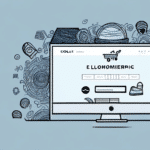Why a Drop-Off Logo is Crucial for Your Brand
A drop-off logo serves as a simplified version of your main logo, optimized for smaller displays such as social media profiles, email signatures, and mobile applications. This streamlined version ensures that your brand remains recognizable and consistent across various platforms, enhancing overall brand recognition.
According to a Nielsen study, consistent branding increases revenue by up to 23%. A well-designed drop-off logo contributes significantly to this consistency, making your brand more memorable and trustworthy to your audience.
Understanding Your Brand Identity and Values
Defining Your Unique Selling Proposition
Before designing a drop-off logo, it's essential to clearly define what sets your brand apart from competitors. Identify your unique selling proposition (USP) and ensure that your logo reflects this uniqueness. This clarity will guide your design choices and help communicate your brand's core values effectively.
Identifying Your Target Audience
Understanding who your customers are is critical in designing a logo that resonates with them. Conduct market research to gather insights into your audience's preferences, behaviors, and expectations. Tools like Qualtrics can help in gaining a deeper understanding of your target demographic.
Researching Your Market and Competitors
Analyzing Competitor Logos
Examine the logos of your competitors to identify common themes and gaps in the market. This analysis can help you design a logo that stands out while adhering to industry standards. For example, 99designs offers insights into current logo design trends across various industries.
Staying Updated with Market Trends
Logo design trends evolve over time. Staying updated ensures that your drop-off logo remains relevant and appealing. Incorporate modern design elements that align with current aesthetic preferences without compromising your brand’s identity.
Designing Your Drop-Off Logo
Selecting Appropriate Colors and Fonts
Colors and fonts play a pivotal role in conveying your brand's personality. Choose a color palette that aligns with your brand’s values and evokes the desired emotional response. Similarly, select fonts that are legible and reflect the tone of your brand. Tools like Coolors can assist in creating harmonious color schemes.
Incorporating Design Elements
Design elements such as shapes, lines, and symbols should complement your logo's overall aesthetic. Aim for simplicity to ensure that the logo remains clear and identifiable, even at smaller sizes.
Creating Multiple Iterations
Develop several versions of your logo to explore different concepts and refinements. This iterative process allows you to evaluate which design best represents your brand and resonates with your audience.
Utilizing Online Tools for Logo Creation
Choosing the Right Design Tools
Leverage online tools and software to design your drop-off logo efficiently. Platforms like Canva and Adobe Illustrator offer a range of features that cater to both beginners and experienced designers.
Exporting in Multiple Formats
Ensure your logo is available in various file formats (e.g., PNG, SVG, JPEG) to maintain quality across different mediums and applications. This versatility is essential for consistent branding across all platforms.
Testing and Refining Your Logo Design
Gathering Feedback
Solicit feedback from colleagues, customers, and industry experts to gain diverse perspectives on your logo design. Constructive criticism can highlight areas for improvement and enhance the overall effectiveness of your logo.
Ensuring Scalability and Versatility
Your drop-off logo should retain its clarity and impact at different sizes and on various backgrounds. Test the logo in multiple contexts to ensure it remains effective and recognizable.
Implementing Your Drop-Off Logo Across Platforms
Creating a Consistent Brand Presence
Integrate your drop-off logo seamlessly across all marketing channels, including social media, email campaigns, and digital advertisements. Consistency reinforces brand recognition and builds trust with your audience.
Developing a Brand Style Guide
Establish guidelines that outline the proper usage of your drop-off logo, including color codes, spacing, and placement rules. A comprehensive style guide ensures uniformity and prevents misuse of your logo across different platforms.
Measuring the Impact of Your Drop-Off Logo
Tracking Brand Awareness and Recognition
Use analytics tools to monitor how your drop-off logo influences brand awareness and customer engagement. Metrics such as brand recall, social media interactions, and website traffic can provide insights into your logo’s effectiveness.
Adjusting Based on Feedback and Data
Continuously evaluate the performance of your logo and be prepared to make adjustments based on feedback and evolving market trends. Flexibility ensures that your logo remains relevant and continues to represent your brand accurately.
Conclusion: Crafting a Professional Drop-Off Logo for Lasting Brand Impact
A professionally designed drop-off logo is a vital element of your branding strategy, ensuring consistency and recognition across various platforms. By understanding your brand identity, researching your market, and utilizing effective design practices, you can create a logo that not only stands out but also resonates deeply with your audience. Continual testing and adaptation will further strengthen your brand’s presence, fostering trust and loyalty among your customers.




















